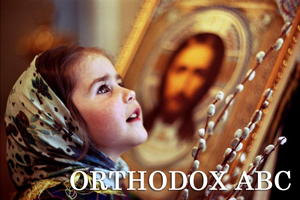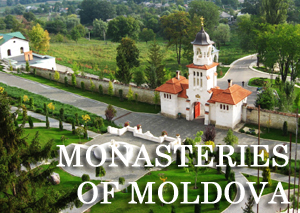
By Tatiana Fedorova
Human perception is an extraordinary thing. We are very often inclined to accept a given piece of information as true simply on the grounds that, in modern terms, it has a high citation index. In other words, one and the same text, with slight variations, wanders from publication to publication and from blog to blog. And the more often it is reproduced the more readily we take it on faith on the grounds that it is what “everyone says.”
But alas, it often happens that the text we copy from one another was wrong to one degree or another in the first place; by spreading it further we are involuntarily misleading an ever greater number of people.
This is precisely what has happened to the life of the man whose memory we are supposedly invited to celebrate on February 14. If one does an Internet search for “St. Valentine’s Day,” one will find hundreds of links reproducing the very same legend with a few variations.
A Bit of History
I became curious about just what the case was in those distant times. Fortunately, in addition to “glossy” literature, one can now easily find no small amount of serious historical research that allows one to separate fact from fiction. Let us try to figure out what really happened and what is merely romantic fiction. And let us not forget that even if certain events more or less coincide chronologically, that by no means implies that a correlation necessarily exists between them. As they say, “after this, therefore because of this.”
As for me, since I belong to the world of science, I prefer to rely only on facts that are credible and documented, avoiding speculation and fantasy.
First, as is confirmed by the Roman martyrology, is the very fact that at the dawn of Christianity at least three men named Valentine were martyred for their faith. But at the same time it is curious to note that, although all three died no later than 270, their names are absent from the earliest known list of martyrs, the Chronography of 354.
Of the first of these, all that is known is that he died in Carthage along with a group of fellow believers; we will not mention him further due to a complete lack of additional information. The second Valentine was the Bishop of Interamna (today’s city of Terni). About him it is known that he was beheaded during a persecution of Christians, but sources differ concerning when exactly this took place – at the end of the third century, during the era of Emperor Aurelian, or a century earlier. He is buried on the Via Flaminia in the outskirts of Rome.
The date of death of the third martyr, the presbyter Valentine, is known more accurately. He was beheaded between 268 and 270 and also buried on the Via Flaminia, although somewhat further from Rome. At present the relics of the presbyter Valentine repose partly in Rome and partly in Dublin, while the relics of the bishop are in Terni.
At the very end of the fifth century, Pope Gelasius decided to glorify a whole series of martyrs, among them Valentine (it is now no longer possible to say which one precisely, but it was likely all at once). The relevant act formulated it this way: “as people whose names are justly venerated among people, but whose deeds are known only to the Lord.”
Birth of the Tradition
Incidentally, the fact that this celebration coincided chronologically with the local Roman pagan festival, which was completely prohibited by the same Pope, is not at all surprising; this was the normal practice of the early Christians. This same principle was used to choose the dates of the celebration of the Nativity of Christ and the Nativity of John the Forerunner, which coincided with the pagan festivals in honor of the winter and summer solstices.
The early Church tried by every means to attach a new Christian meaning to ancient celebrations. Yet we cannot now assert unequivocally that the celebration of the memory of the martyr Valentine was established in place of the Lupercalia, given that no relevant documentary records have been preserved. Moreover, the Lupercalia were merely local city festivals, while the celebration of the memory of St. Valentine was established on a Church-wide scale, i.e., it affected the entire Christian Church of the time. On the Empire-wide scale in that era a completely different ancient ritual was celebrated: the so-called festival of Februa, which was later gradually displaced by Christian feasts of the Theotokos.
In this manner, the celebration of the memory of St. Valentine was established exclusively as veneration for his martyrdom, without any connection to the patronage of lovers. A short time later, under Pope Julius I, a church dedicated to St. Valentine was built at the Ponte Molle, and for a short time the city gates were called “Valentine’s Gate.”
St. Valentine is mentioned as an illustrious martyr in the Sacramentary of St. Gregory, the Roman Missal Tommasi, and in a whole series of British lives of saints. In the Middle Ages he was depicted either with a sword and a palm branch (symbols of his martyrdom) or healing the daughter of judge Asterius.
Over the next nine centuries the saint’s name is mentioned in the acts of the martyrs, the earliest of which dates back to the sixth or seventh centuries, and in the “Golden Legend,” a collection of lives of saints from 1260, where Valentine’s meeting with “Emperor Claudius,” his refusal to betray Christ, and the healing of the jailer’s daughter from blindness and deafness are mentioned for the first time. It appears likely that we have here the merging of the lives of two completely different saints, and we shall soon see.
As for the romantic legends – the secretly performed marriages and notes “from your Valentine” – nothing remotely resembling this appears anywhere until the English poet Geoffrey Chaucer, in his 1382 poem “The Bird Parliament,” mentions that on Valentine’s day birds begin to look for mates. This phrase, however, is not entirely accurate: in the British climate birds begin to equip their personal lives somewhat later. But romantic literature, which was in its heyday, took it up, developed it, and replicated it in many later works. The Brockhaus and Efron Encyclopedic Dictionary, published more than a century ago, states: “February 14 in England and Scotland in olden times was accompanied by a peculiar custom. On the eve of the day dedicated to St. Valentine, young people gathered and placed in an urn a collection of tickets corresponding to their number that were designated with the names of young girls; later each removed one such ticket. The girl whose name was given in this manner to a young man became his ‘Valentine’ for the coming year, just as he became her ‘Valentine’; this entailed the young people having a relationship among themselves that was similar to the descriptions in medieval romances of that between a knight and his ‘lady of the heart.’ This custom, of which Ophelia speaks so movingly in her celebrated song, in all likelihood is of pagan origin.”
The custom of sending greeting cards to loved ones on the day of St. Valentine also arose in the Middle Ages. The very first Valentine card in the world is thought to be a note sent in 1415 by Charles, Duke of Orleans, from the Tower of London prison to his wife.
Contemporary Veneration and the Contemporary Holiday
As far as veneration of the saint is concerned, here is what has happened in recent times. During the reform of the Roman Catholic calendar of saints made in 1969, the celebration of the memory of St. Valentine as a Church-wide saint was abolished on the grounds that there is no information about this martyr apart from his name and information on his beheading by sword. Today on February 14 the celebration of the memory of St. Valentine is purely optional.
In the Orthodox Church, on the other hand, St. Valentine is venerated as before. More precisely, each of the two martyrs mentioned above – the bishop and the presbyter – has his own day of commemoration. Valentine the Roman (the presbyter) is commemorated on July 6/19, while the Hieromartyr Valentine, Bishop of Interamna, is celebrated on July 30/August 12. If one reads the lives of these saints attentively it becomes obvious that the legends that are now widespread mingled fragments relating to entirely different people, and that medieval writers even added many romantic but entirely unrealistic episodes.
It therefore turns out that we owe the emergence of the image of St. Valentine as the patron saint of lovers, as well as the numerous legends associated with him, to the Middle Ages and its romantic literature, and not at all to the circumstances of the lives of the real martyrs who perished during the dawn of Christianity. And if one were to ask “whose” holiday this is, one is forced to admit that for over forty years there is no St. Valentine’s Day in the Catholic liturgical calendar; in his place on February 14 the memory of Sts. Cyril and Methodius, the Equal to the Apostles, is celebrated. Therefore today both St. Valentines are “ours,” since among all the churches only the Orthodox Church venerates their memory.
As for the idea that the feast day of St. Valentine, as patron saint of lovers, could have arisen as a Christianizing replacement for the Lupercalia, this arose in the eighteenth century as a hypothesis posed by the antiquarians Alban Butler (compiler of Butler’s Lives of the Saints) and Francis Douce in connection with the fact that absolutely nothing was known about the real Valentine. In actual fact, there is no credible evidence for this hypothesis, apart from attempts to tie the works of the fourteenth century to the realities of the third. Here I will only briefly lay out the chronology of events, and invite all interested to become acquainted with the works of the historians William Frend and Jack Oruch, published in 1967 and 1981, respectively.
Over time the little-known custom of sending loved ones small souvenirs and notes on February 14, which existed primarily in England and France, went with the immigrants to the New World, where it was put on a grand scale. It all started innocently enough, with notebooks of poems printed on detachable pages to aid lovers not poetically gifted, but gradually the spirit of our times took over. It is treated differently in different countries: in some it is widely celebrated, in others very modestly. And here is what I think about all this.
Love vs. Commerce
I do not care for all this commercialized “Valentine’s” hype that begins as early as January, following the Christmas sales. I dislike the use of the Nativity and Pascha as means to increase sales in just the same way. I do not like the creation of a specific, rather tasteless environment and the holiday’s gradual shift of emphasis from the admiration of knightly love, as it was in the time of Chaucer and his epigones, to love-“eros.”
But here is what is important. In our lives, in actual fact, true love – the love of giving and not expecting anything in return – is given very little space. We have all read the words of the Gospel or seen in the movie theater how a young, luminous Andrei Rublev explains what love is to a young princess. But how often do we tell our loved ones about our feelings? How often do we try to give them at least a little gift just for its own sake, for no special reason? I fear that we do so very rarely. We are consumed by our own affairs, our own problems, so that we no longer think of the other person, but feel sorry for ourselves and want consolation and attention for ourselves. Indeed, it is not acceptable in our culture to speak much about one’s feelings, to be in love, especially if a couple is beyond its first year of living tighter. Love and romance – many think this is all the lot of the young.
Is it really a bad thing if one is reminded, even with the help of an alien calendar, that it would be nice to do some small, kind marvel for our most dear and beloved people? In the end, it depends on us whether we succumb to the commercial bate or not, to follow traditions imposed from outside or to create something of one’s own, something personal.
In my opinion, a holiday of love is a wonderful thing. But not a loud and bombastic one, celebrated practically from the same script from nursery to office, but an intimate holiday of loving people, allowing us to remember that we are not just parents, children, senior officials, pastors and parishioners, but also simply men and women, loving and beloved. That we are together not simply for the continuation of the human race or for taking care of household management, but also simply for one another and for the feeling that unites us.
Let us recall what that remarkable storyteller, Evgeny Shvarts, a Christian, said: “Glory to the brave who dare to love, knowing that all this will come to an end. Glory to madmen who live as if they were immortal – death sometimes departs from them.” Let us not forget about this, and let not just one day be a holiday of love for us, but our entire lives.
Source: Pravmir.com


 Memorial house of romanian elder Sofian Boghiu Consecrated in his native Village
Memorial house of romanian elder Sofian Boghiu Consecrated in his native Village  On the 14th Sunday after Pentecost, His Eminence Metropolitan Vladimir celebrated the Divine Liturgy in the St. Nicolas Monastery, Dobrusa village, Soldanesti region
On the 14th Sunday after Pentecost, His Eminence Metropolitan Vladimir celebrated the Divine Liturgy in the St. Nicolas Monastery, Dobrusa village, Soldanesti region  Inauguration of the volume of articles presented at the National Scientific Conference “The Orthodox Church and the State: Faith and Knowledge”
Inauguration of the volume of articles presented at the National Scientific Conference “The Orthodox Church and the State: Faith and Knowledge”  The 12th Sunday after Pentecost – kindness in God changes the world we live in
The 12th Sunday after Pentecost – kindness in God changes the world we live in  The 11th Sunday after Pentecost – loving our God and our neighbor
The 11th Sunday after Pentecost – loving our God and our neighbor  The Transfiguration of the Lord, celebrated in the Nativity of the Lord Cathedral in Chisinau
The Transfiguration of the Lord, celebrated in the Nativity of the Lord Cathedral in Chisinau  His Eminence Metropolitan Vladimir celebrates 65th anniversary
His Eminence Metropolitan Vladimir celebrates 65th anniversary  Divine Service at the St. Theodore of Tyre Monastery (Ciuflea) in Chisinau, and congratulation of Archimandrite Nicolae (Rosca), the Monastery’s confessor-administrator, on the 50th anniversary.
Divine Service at the St. Theodore of Tyre Monastery (Ciuflea) in Chisinau, and congratulation of Archimandrite Nicolae (Rosca), the Monastery’s confessor-administrator, on the 50th anniversary.  The Tenth Sunday after Pentecost: Divine Liturgy in the Nativity of the Lord Cathedral in Chisinau
The Tenth Sunday after Pentecost: Divine Liturgy in the Nativity of the Lord Cathedral in Chisinau 


